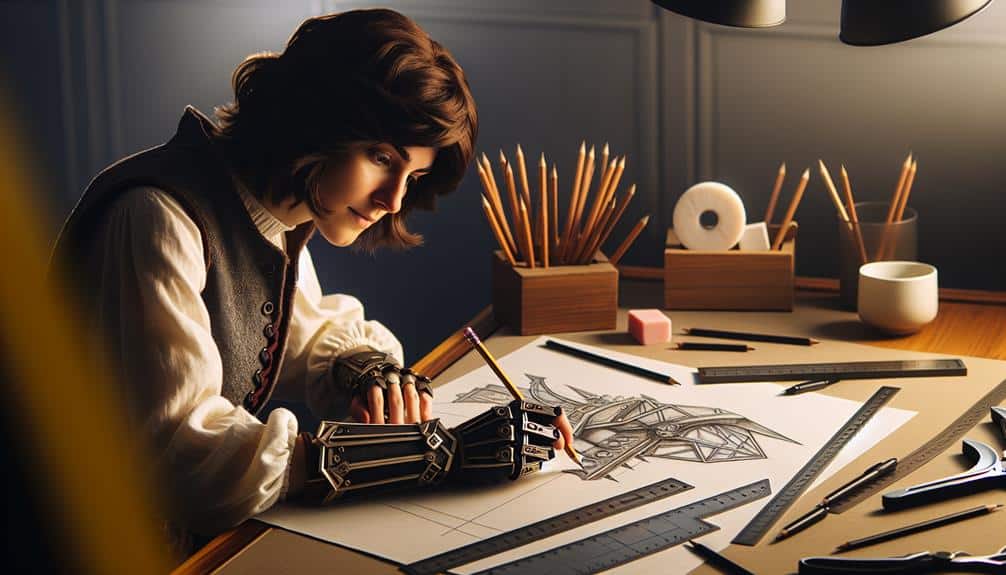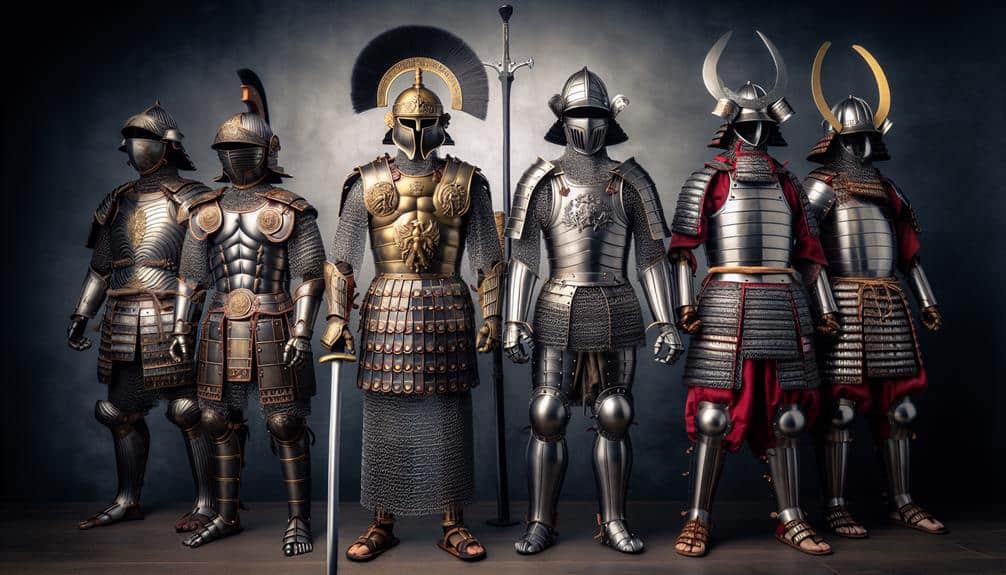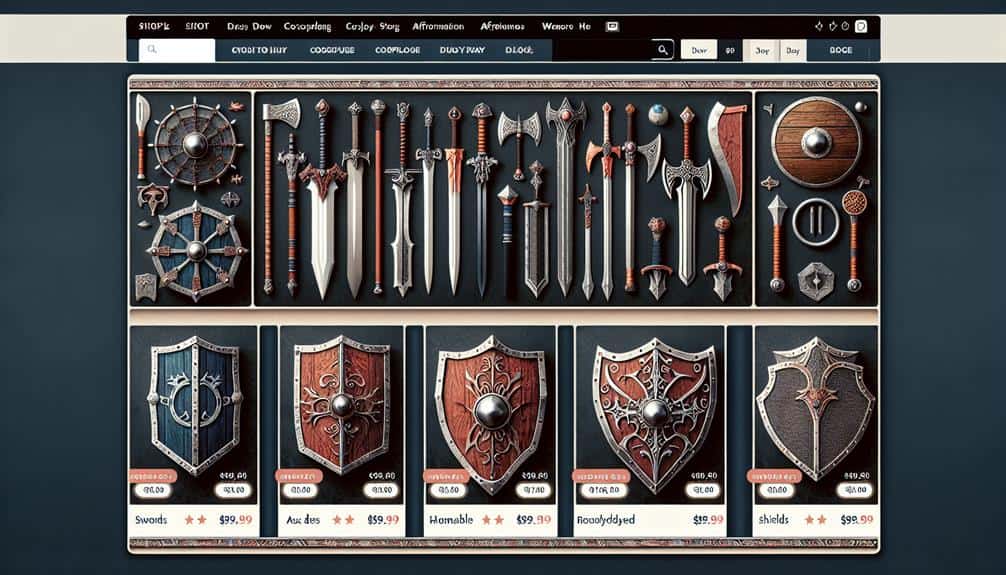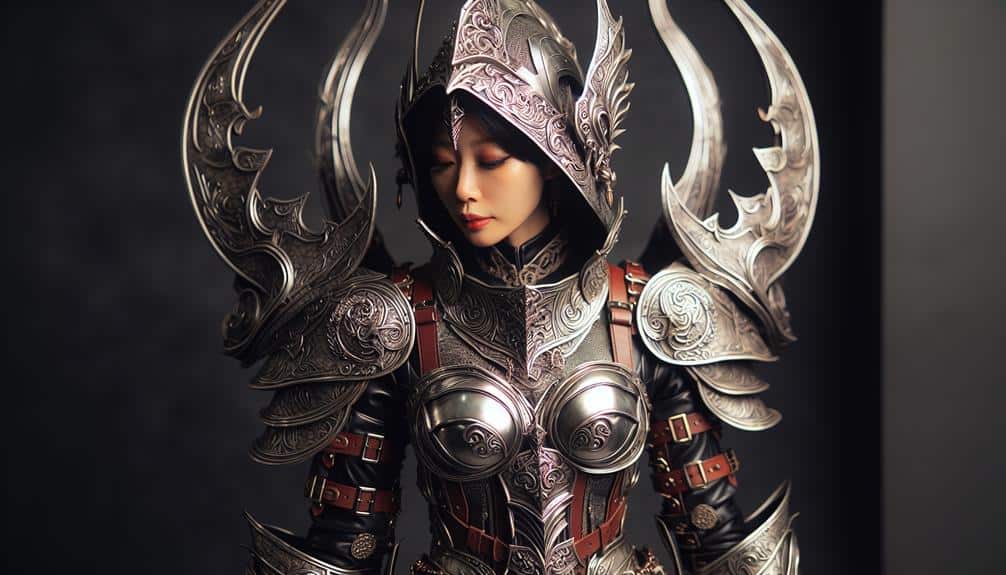Have you ever wondered if crafting your own cosplay weapons and shields could elevate your costume to the next level of authenticity?
Exploring the world of creating custom pieces opens up a world of possibilities, allowing you to truly embody your favorite characters. From selecting the right materials to mastering intricate detailing techniques, the journey of designing your own cosplay accessories is both challenging and rewarding.
As you start on this creative endeavor, you'll find yourself immersed in a world where imagination knows no bounds.
Key Takeaways
- Experiment with materials like EVA foam and Worbla for crafting authenticity.
- Utilize foam and thermoplastics for lightweight yet durable props.
- Enhance props with weathering techniques and custom decals for realism.
- Integrate mesmerizing LED lights for stunning effects and interactivity.
Choosing the Right Materials
When crafting cosplay weapons and shields, selecting the crucial materials is essential to ensure durability and authenticity in your final creation. Choosing the right materials can make or break the overall impact of your cosplay ensemble.
For crafting weapons, foam options like EVA foam and craft foam are popular choices due to their lightweight properties and ease of manipulation. EVA foam, known for its durability, is excellent for creating sturdy sword blades and intricate details. Craft foam, on the other hand, is versatile and perfect for smaller, detailed pieces.
For those looking for metal alternatives, thermoplastics such as Worbla offer a realistic appearance while remaining lightweight. Worbla can be molded into various shapes and designs, making it ideal for crafting armor and weapon accents. Additionally, thermoplastics can be heat-molded multiple times, allowing for corrections and adjustments during the crafting process.
Experimenting with different foam options and metal alternatives will help you achieve the desired look for your cosplay weapons and shields.
Crafting Techniques for Beginners
To initiate on mastering the art of crafting cosplay weapons and shields, beginners can explore a variety of creative techniques that lay the foundation for bringing their imaginative designs to life. When starting out, consider delving into foam crafting, a popular method that allows for lightweight and customizable props. Foam crafting involves shaping and carving foam sheets to achieve the desired weapon or shield shape. Beginners can also venture into prop making, utilizing materials like thermoplastics or EVA foam to construct durable and realistic-looking props.
For those new to crafting, foam crafting serves as an excellent entry point due to its forgiving nature and ease of manipulation. Through this technique, beginners can experiment with different textures, shapes, and sizes to create unique cosplay pieces. Prop making, on the other hand, offers a broader range of materials and techniques, providing beginners with a foundation to explore advanced prop construction methods in the future.
Advanced Painting and Detailing Tips
Interested in elevating your cosplay props to the next level? To truly make your weapons and shields stand out, consider advanced painting and detailing techniques. Weathering techniques can add depth and realism to your props. By strategically applying paint to create the illusion of wear and tear, you can give your props a battle-worn appearance. Experiment with custom decals to add intricate designs or symbols that enhance the overall look of your cosplay pieces.
For a touch of sophistication, explore metallic finishes. Using metallic paints or foils can give your props a shiny, futuristic feel. Additionally, incorporating weathering effects such as rust or patina can take your props to a whole new level of authenticity. These techniques can make your cosplay weapons and shields look like they've truly been through epic battles.
Adding LED Lights for Effects
Enhance the visual impact of your cosplay weapons and shields by incorporating mesmerizing LED lights for stunning effects. To achieve this, explore circuit integration and wiring to seamlessly embed LED lights into your creations. Understanding the basics of circuitry will enable you to power your lights effectively while ensuring a clean and professional finish.
Once you have the wiring in place, the next step is to showcase your creativity with custom light patterns and programming. Experiment with different colors, brightness levels, and flashing sequences to bring your weapons and shields to life. Consider incorporating motion sensors or sound triggers to add interactive elements to your LED lighting effects, further elevating your cosplay game.
Mastering the art of customizing light patterns and programming will allow you to create truly unique and eye-catching designs that will set your cosplay apart. With a solid understanding of circuit integration, wiring, and programming, the possibilities for enhancing your cosplay weapons and shields with LED lights are endless.
Safety Measures and Regulations
As you begin on incorporating mesmerizing LED lights into your cosplay weapons and shields, it's vital to guarantee safety measures and adhere to relevant regulations to take into account a secure and compliant display of your creations.
When delving into the world of cosplay weaponry enhanced with LED lights, it's critical to take into account the following safety precautions and legal restrictions:
- Battery Safety: Guarantee that the batteries used in your LED lighting setup are securely enclosed within the weapon or shield to prevent any accidental exposure or leakage.
- Heat Management: Implement heat-resistant materials and proper ventilation to prevent overheating of the LED components, reducing the risk of burns or malfunctions during your cosplay presentation.
- Legal Compliance: Familiarize yourself with local laws and conventions regarding cosplay weapons, especially those with lighting features, to avoid any issues with venue regulations or safety inspections.
Frequently Asked Questions
How Can I Incorporate Moving Parts or Mechanisms Into My Cosplay Weapon Design?
To incorporate moving parts or mechanisms into your cosplay weapon design, consider motorized attachments or hidden compartments for added intrigue. Interactive elements and transforming components can elevate your creation to the next level of craftsmanship and creativity.
Are There Any Specific Considerations to Keep in Mind When Designing a Shield That Can Withstand Impact During a Cosplay Event?
When designing a shield for impact resistance, consider materials like EVA foam or thermoplastics. Custom designs can enhance both aesthetics and durability. Experiment with painting techniques to add flair while ensuring structural integrity.
What Are Some Creative Ways to Incorporate Sound Effects Into My Cosplay Weapon Design?
To add sound effects to your cosplay weapon, consider integrating sound reactive technology. You can also include interactive elements like hidden surprises or light-up accents for a dynamic experience that enhances your overall cosplay design.
How Can I Create a Weathered or Battle-Worn Effect on My Cosplay Weapon or Shield?
Imagine the tale your weapon tells with each scratch and dent. Embrace the art of aging technique. To achieve a weathered look, consider using a rust effect paint or applying a mix of black and brown washes.
Are There Any Special Techniques for Creating Transparent or Glowing Effects on a Cosplay Weapon or Shield?
To create holographic effects on your cosplay weapon or shield, consider using LED lighting. Incorporate LEDs strategically to achieve a glowing, transparent appearance. Experiment with placement and color to enhance the overall look and make your cosplay stand out.



